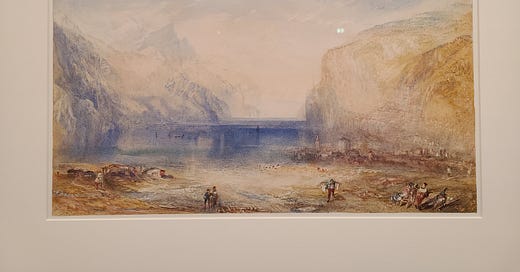I first encountered Turner’s Alps, oddly enough, by way of the sea. It was in the fall of 2019, at the Mystic Seaport Museum’s exhibition J.M.W. Turner: Watercolors from Tate, which drew from the thousands of Turner works bequeathed to the British nation upon the artist’s death in 1851. As one of history’s most renowned maritime painters, Turner was only the most fitting of subjects for the New England seaside town, and the museum, seemingly knowing what they had, squeezed in as much of Turner’s output as possible.
Amidst all the ships and squalls, however, there was one Turner landscape that especially caught my eye: Mont Blanc and the Glacier des Bossons from above Chamonix: Evening. From my own, purely amateur painting experience, I never would have thought to paint a snow-capped mountain face using watercolors–there simply would not be enough texture to capture the layers of rock and snow. Yet it was as if Turner saw something beyond ruggedness in Mont Blanc’s appearance, and instead showed how the mountain's vast white face could act as a screen to reflect the last light of day. I was so struck by the small painting that I took a photo and never forgot it.
Keep reading with a 7-day free trial
Subscribe to The Alpine Wine Society to keep reading this post and get 7 days of free access to the full post archives.




